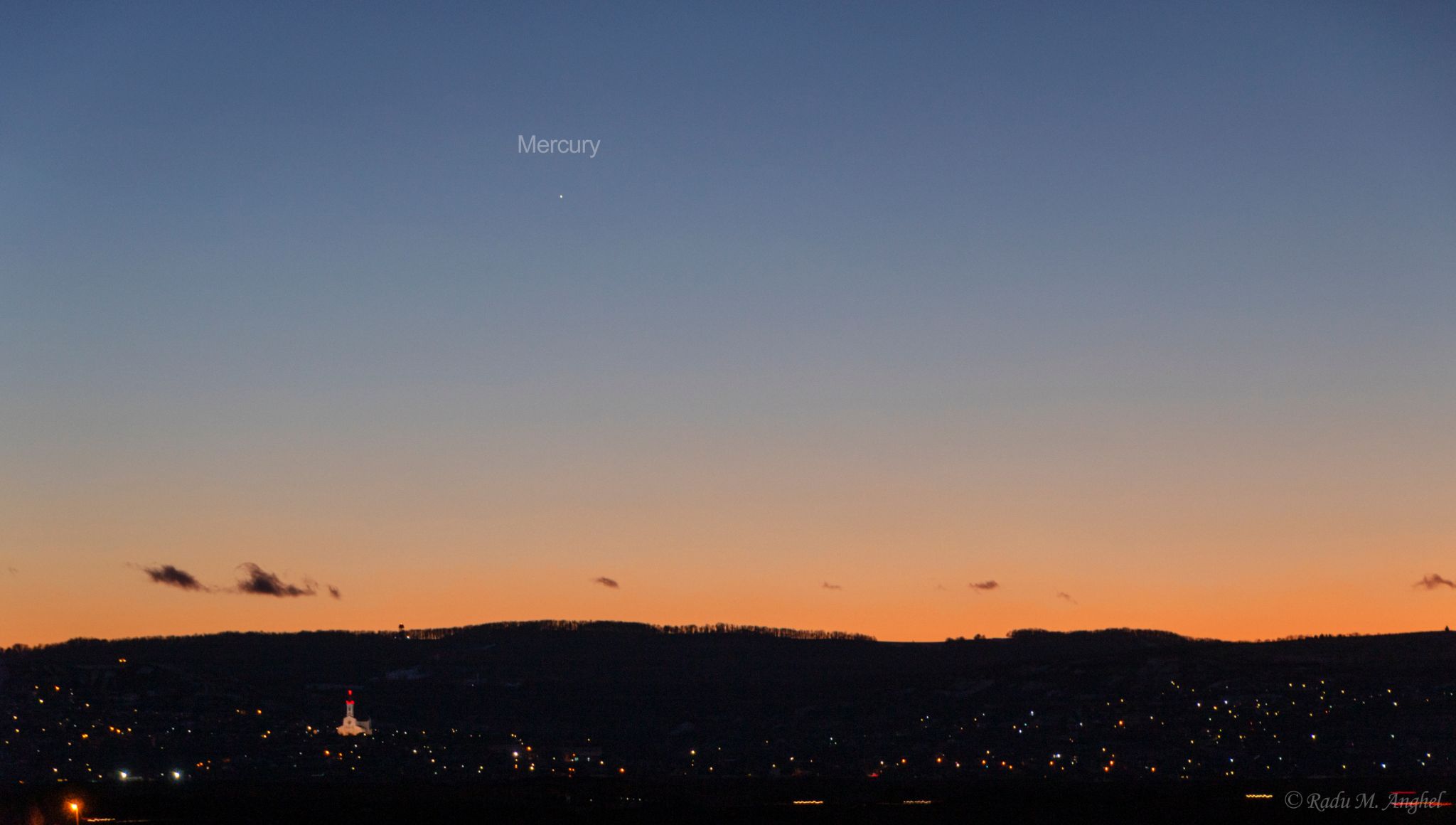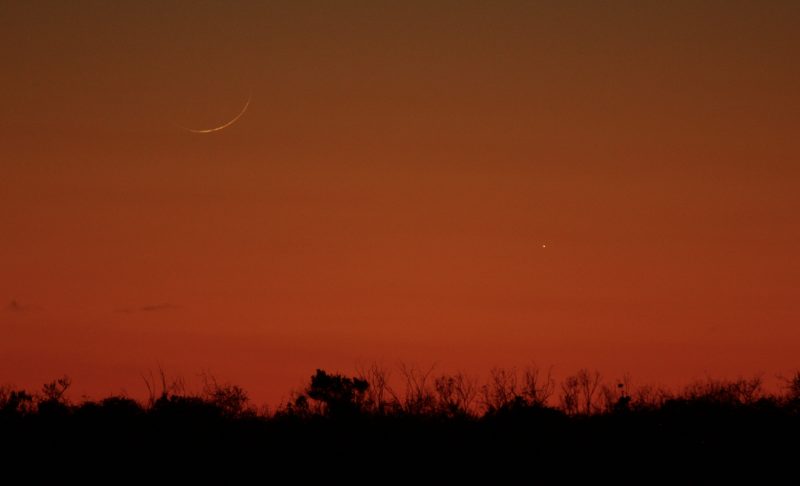Live in the Northern Hemisphere? If so and you’ve never seen the planet Mercury – or even if you have – take advantage of your golden opportunity to see Mercury after sunset in early February 2020. This will be a fine evening apparition of Mercury for northerly latitudes. If you live in the Southern Hemisphere, you might glimpse Mercury, too, but it’ll be tougher, and you might need binoculars. The best evening view of Mercury in the Southern Hemisphere will come in September-October 2020.
No matter where you are on Earth, here’s the best way to look for Mercury. Make sure to have an unobstructed horizon in the direction of sunset, and, if possible, perch yourself on top of a hill or balcony. Search first for the blazing planet Venus, third-brightest celestial body to light up the sky, after the sun and moon. People with excellent vision might spot Venus almost immediately after sunset, but many of us will have to wait some 30 to 45 minutes after sundown to see the sky’s brightest planet. Then, as dusk deepens into darkness, look for Mercury to pop out below Venus in the western sky. Mercury will be close to the sunset point on the horizon. You might see Mercury with the eye alone within an hour after sunset. With binoculars, you can spot Mercury (and Venus) even earlier.
Don’t delay, however. At mid-northern latitudes, Mercury will follow the sun below the western horizon about 1 1/3 hours after sundown. At Earth’s equator (0 degrees latitude), Mercury will set about one hour after the sun; and at temperate latitudes in the Southern Hemisphere, Mercury will stay above the horizon for only about 45 minutes after sunset.
Click here for a sky almanac, giving you Mercury’s setting time in your sky.


Mercury is often said to be elusive. Some people say they’ve never seen it. But that’s not because Mercury is faint. In fact, Mercury is super bright right now, shining some six times more brilliantly than a 1st-magnitude star. Mercury isn’t nearly as bright as Venus, however.
Even though it’s bright, Mercury isn’t necessarily easy to see. That’s because Mercury only appears in the sky after sunset or before sunrise, when its luster is tarnished by the glow of twilight. Mercury, the innermost planet, orbits the sun inside Earth’s orbit and is often lost in the glare of the sun. But, at opportune times – like now, for the Northern Hemisphere – you can see Mercury fairly easily, if you go outside and look west after sunset.
At present, Mercury is nearing the outer edge of its orbit, as seen from Earth. In fact, in another 10 days – on February 10, 2020 – Mercury will reach its greatest elongation (maximum angular separation) of 18 degrees east of the setting sun.
Although Mercury’s greatest elongation measures the same in both the Northern and Southern Hemispheres, Mercury stays out later after dark in the Northern Hemisphere.
That’s because the ecliptic – the pathway of the sun, moon and planets in front of the constellations of the zodiac – hits the evening horizon at a steep angle in late winter, yet at a shallow angle in late summer. Therefore, this evening apparition of Mercury is particularly favorable for the Northern Hemisphere and not so favorable for the Southern Hemisphere. From the Northern Hemisphere now, Mercury should be rather easy pickings.
Mercury is bright in early February, but slowly dimming as seen from Earth, because of its waning phase. Yes, because it’s an inner planet, Mercury shows phases, like a tiny moon. You need a telescope, though, to see Mercury’s phases.

Bottom line: We’re now in the midst of a good evening showing of Mercury for the Northern Hemisphere. At northerly latitudes, watch for Mercury to show itself at dusk/nightfall – beneath Venus, and near the sunset point – for the next few weeks.











